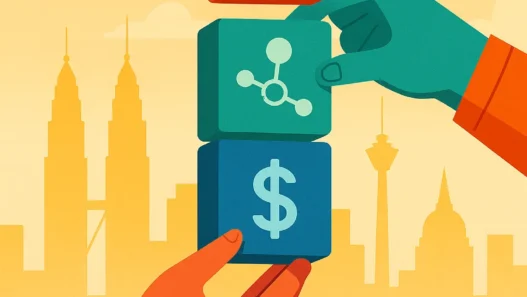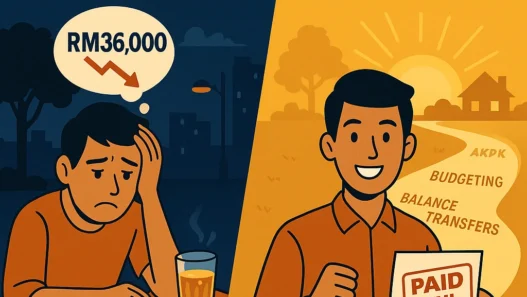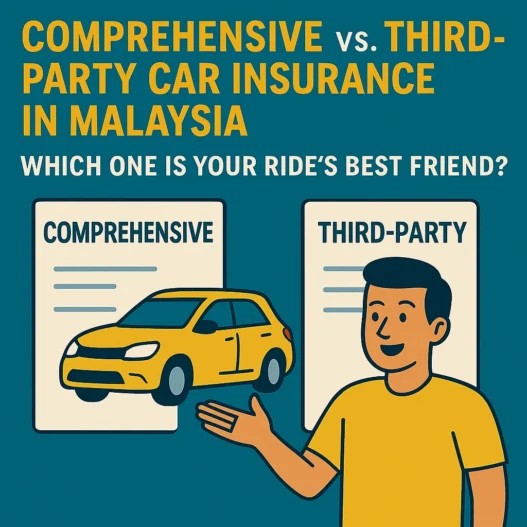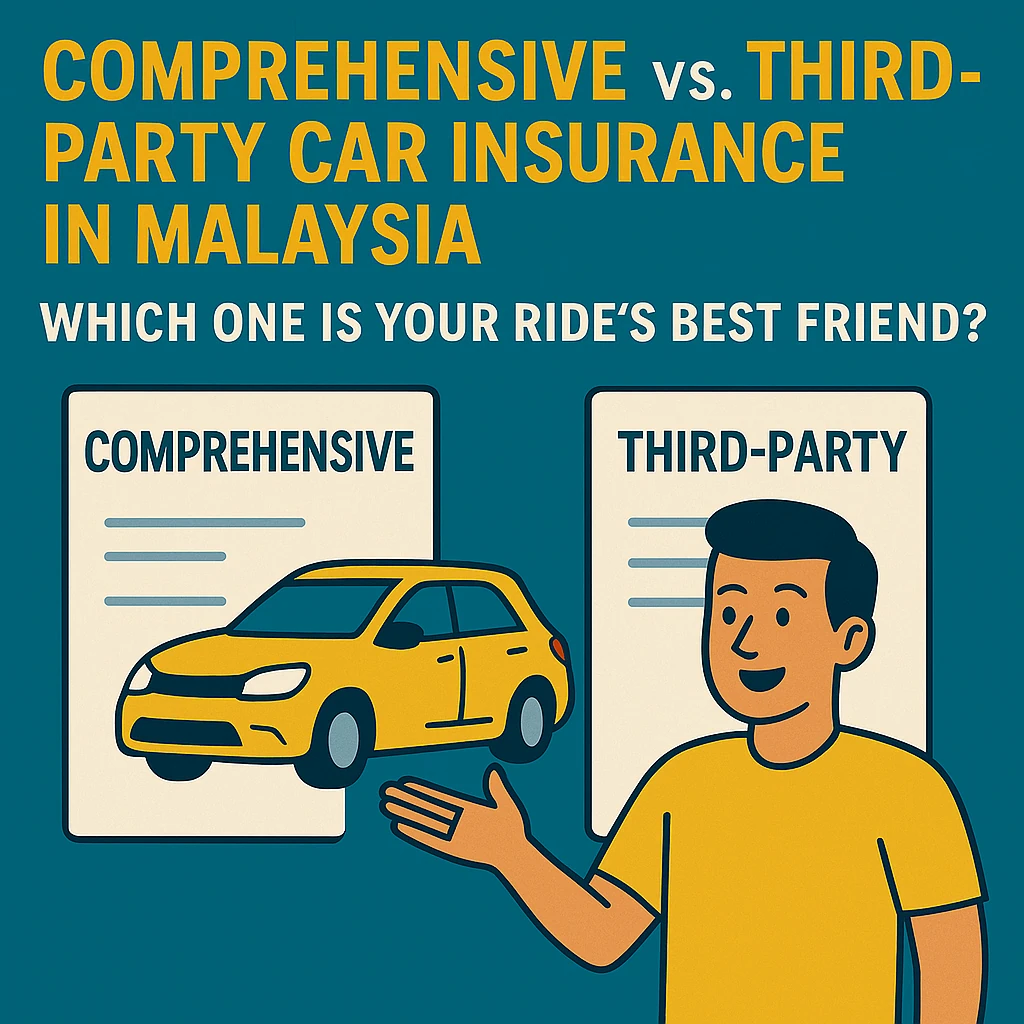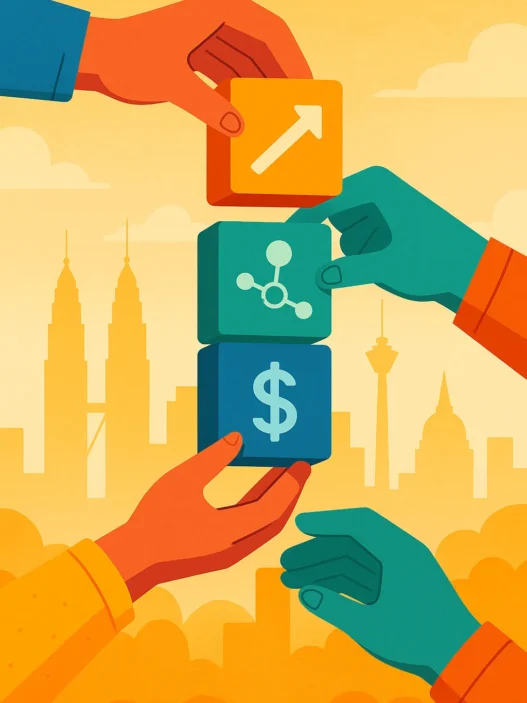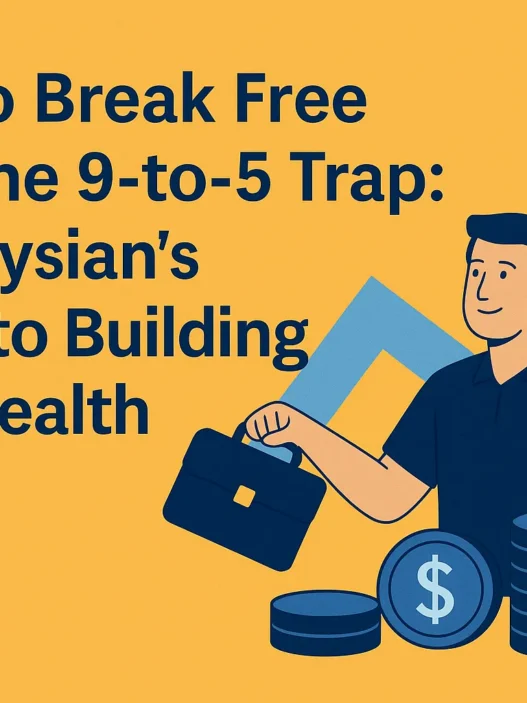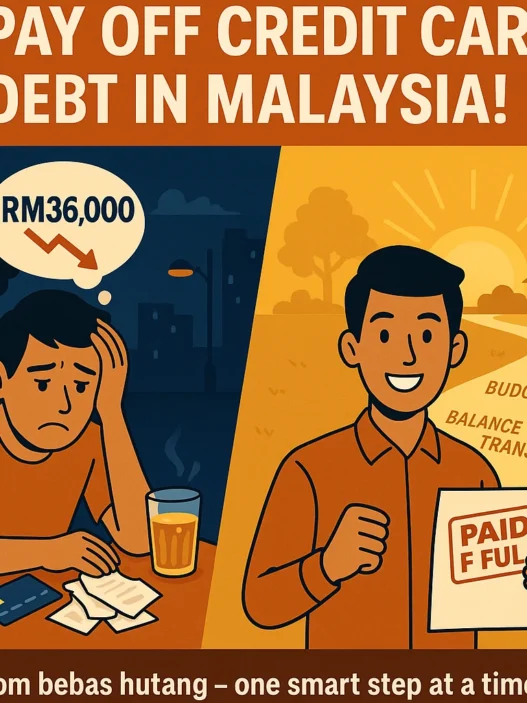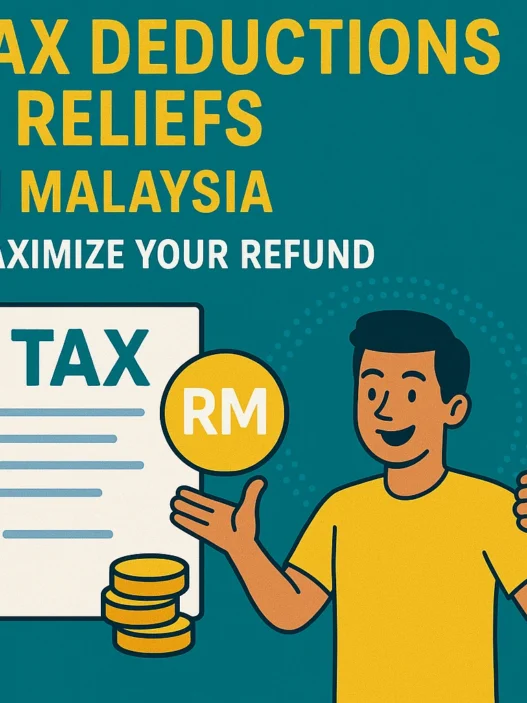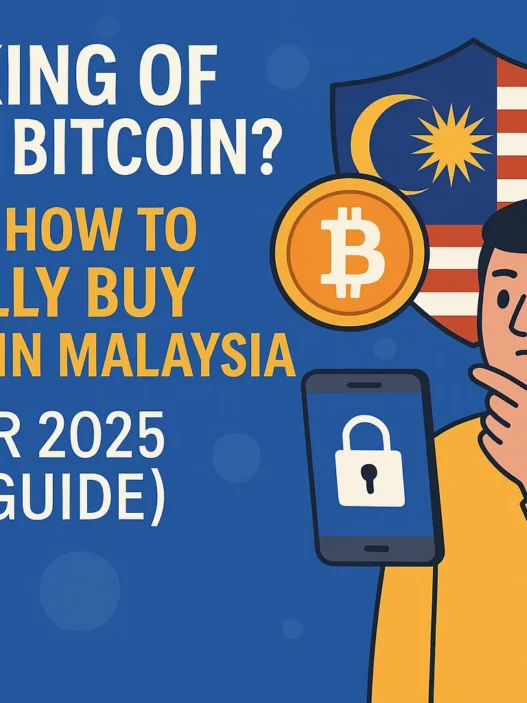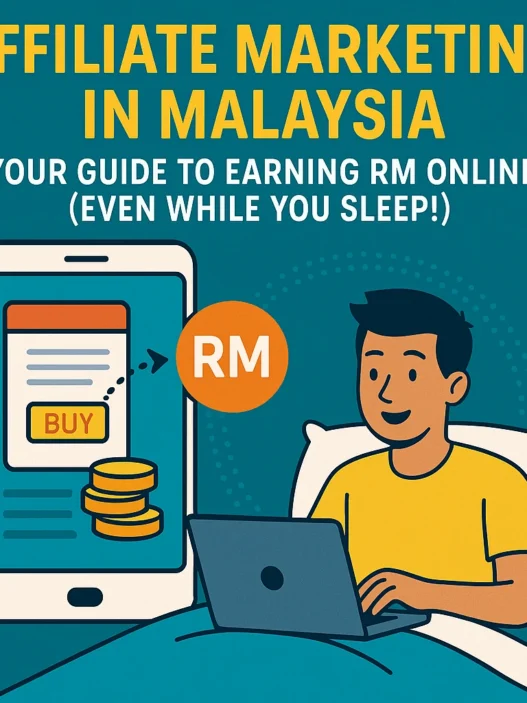Okay, let’s dive into the world of car insurance in Malaysia. It’s one of those adulting things that might seem mafan (troublesome), but trust me, getting it right can save you a massive headache and a lot of money down the road!
So, you’ve got your driving license, maybe you’re eyeing that new Myvi, or perhaps you’re cruising in a trusty old Kancil. Awesome! But before you hit the PLUS highway or navigate the bustling streets of KL, there’s one crucial thing every Malaysian driver needs: car insurance. Not just any insurance, but the right insurance. It’s not just about ticking a box for your road tax renewal, tau. It’s about protecting your hard-earned money and giving you peace of mind.
Many of us Malaysians learn to drive, but when it comes to the nitty-gritty of insurance – Comprehensive? Third-Party? Special Perils? – it can feel like deciphering a secret code. Formal education might teach us Pythagoras’ theorem, but not much about NCDs or what happens if your car decides to become a submarine during a flash flood. That’s why we’re here! This isn’t just another boring finance article; think of this as your kawan (friend) guiding you through the maze, so you can make a smart choice for your beloved car and your wallet.
Car Insurance in Malaysia – More Than Just a Piece of Paper!
First things first, why do we even need car insurance in Malaysia? Is it just another bill to pay?
- The “Wajib” (Compulsory) Factor: Let’s get this straight – having car insurance is compulsory in Malaysia. Under the Road Transport Act 1987, you cannot legally drive your car on public roads or renew your road tax without at least a basic Third-Party insurance policy. No ifs, ands, or tapau about it!
- Why It’s a Lifesaver (Not Just for Your Wallet): Imagine this: you’re driving, and BAM! – a minor fender bender. Or worse, a more serious accident. Road accidents are unfortunately common in Malaysia. In 2023 alone, the Royal Malaysia Police (PDRM) recorded over 598,635 road accidents, with 6,443 fatalities. Having the right insurance means you’re not left alone to foot potentially massive bills for repairs or, God forbid, medical expenses for others involved. It’s your financial safety net.
- Quick Peek: The Main Types: Generally, in Malaysia, you’ll hear about three main types of car insurance policies:
- Third-Party Only: The most basic and legally required.
- Third-Party, Fire and Theft (TPFT): A step up from basic.
- Comprehensive (often called First-Party): The most extensive coverage.
We’ll focus mainly on Third-Party and Comprehensive, as these are the most common choices drivers grapple with.
Quotable: “Car insurance in Malaysia isn’t just a ‘nice-to-have’; it’s a ‘must-have’ that protects your journey, both on the road and financially.”
Third-Party Car Insurance – Your Basic Shield on Malaysian Roads
Let’s start with the most basic option: Third-Party Only insurance. Think of it as the entry-level protection that gets you legally on the road.
- What Exactly Does “Third-Party” Mean?
In any accident, there are usually at least two parties.- The First Party is you, the policyholder.
- The Second Party is your insurance company.
- The Third Party is anyone else involved in the accident (e.g., the driver of the other car, a pedestrian, a property owner whose fence you damaged).
- Coverage Lowdown: What’s In, What’s Out?
- What’s IN:
- Bodily injury or death to a third party: If you cause an accident and someone else is injured or worse, your insurance will cover their medical expenses or compensation.
- Damage to a third party’s property: If you damage someone else’s car, gate, or property, this policy helps pay for those repairs.
- What’s OUT:
- Damage to YOUR OWN CAR: This is the big one. If you cause an accident, or even if a tree falls on your car, you’ll have to pay for your own car’s repairs out of your own pocket. Adoi!
- Your own injuries: Any injuries you sustain are not covered.
- Theft of YOUR CAR: If your car gets stolen, this policy won’t cover it.
- Fire damage to YOUR CAR: If your car catches fire, again, no coverage for your loss.
- What’s IN:
- The Price Tag: Why It’s the Cheapest Option
Because it offers the most limited protection, Third-Party insurance is the cheapest you can get. It fulfills the legal minimum requirement at the lowest cost. - Who is This For? The Ideal Scenarios
This type of insurance is typically chosen by:- Owners of older cars (say, 15 years or older) where the car’s market value is quite low. The cost of comprehensive insurance might be disproportionately high compared to the car’s worth.
- Those on a very tight budget who need to meet the legal driving requirements.
- People who have a separate financial buffer to cover potential repairs or replacement of their own vehicle.
Quotable: “Third-Party insurance gets you on the road legally and cheaply, but remember, it’s like a basic payung (umbrella) – it only covers the other guy, not you or your ride.”
Comprehensive Car Insurance – The “All-In” Protection Package
Now, let’s talk about Comprehensive insurance. This is often called “First-Party” insurance because it covers you (the first party) and your car, in addition to third parties. It’s the ‘full-spec’ version of car insurance.
- Going Beyond the Basics: What “Comprehensive” Really Covers
Comprehensive insurance includes everything a Third-Party policy covers, PLUS a whole lot more for your own vehicle:- All Third-Party benefits: Bodily injury/death to others, damage to others’ property.
- Damage to YOUR OWN CAR due to accident: Whether the accident was your fault or not (if you claim from your own policy), comprehensive cover helps pay for your car’s repairs.
- Fire Damage to YOUR CAR: If your car is damaged or destroyed by fire.
- Theft of YOUR CAR: If your car is stolen.
- Often includes minor incidents like a broken windscreen (though sometimes this is an add-on).
- The Cost Factor: Why You Pay More for More
Naturally, because it offers much wider protection, Comprehensive insurance premiums are higher than Third-Party. The premium amount depends on your car’s model, age, engine capacity, your No-Claim Discount (NCD), and the sum insured. For example, a new Perodua Myvi (sum insured RM50,000) might have a comprehensive premium of around RM1,200-RM1,500 annually (before NCD). - Who Should Get This?
Comprehensive insurance is highly recommended, and often required, for:- New cars or newer cars (e.g., less than 10 years old): The repair costs for newer cars can be very high, especially with modern tech and sensors.
- Financed cars: If you’ve taken a bank loan to buy your car, the bank will almost certainly require you to have comprehensive insurance to protect their financial interest in the vehicle until the loan is fully paid off.
- High-value cars: If your car is expensive, comprehensive cover is a no-brainer.
- Drivers who want peace of mind: If you want to be sure that your car is protected against most common risks, this is the way to go.
- If you can’t afford to replace or repair your car out-of-pocket: For many Malaysians, a car is a significant investment.
Quotable: “Comprehensive insurance is like having a good, sturdy payung (umbrella) in a Malaysian downpour – you’ll be incredibly glad you have it when you really need it!”
The “In-Between” Option: Third-Party, Fire & Theft (TPFT)
Just a quick mention for TPFT. It’s a middle-ground option.
- What TPFT Adds: It covers everything Third-Party does, PLUS it covers your own car if it’s stolen or damaged by fire. It does not cover damage to your own car from an accident.
- When TPFT Makes Sense: This can be a good option for cars that are a bit older (maybe 10-15 years) and not valuable enough for full comprehensive, but you still worry about theft (which is a real concern for some popular older models in Malaysia) or fire. The premium is moderately priced, sitting between Third-Party and Comprehensive.
Quotable: “TPFT is for when you want more than the basics, but aren’t ready to go full ‘comprehensive kiasu’ just yet for an older car.”
Comprehensive vs. Third-Party: The Ultimate Showdown (Malaysian Edition!)
Let’s break down the key differences in a way that’s easy to digest. Think of it like comparing your favourite nasi lemak stalls – each has its own flavour!
Coverage for Your Own Car (Self-Inflicted Accident/Damage)
Third-Party: 💔 No coverage. You pay for all repairs to your car yourself. Even if a tree branch falls on it, *sendiri tanggung* (bear it yourself).
Comprehensive: ✅ Covered! Your insurance will pay for repairs to your car, after you pay any applicable ‘excess’.
Coverage for Third Parties (Damage/Injury to Others)
Third-Party: ✅ Covered. Pays for the other person’s car repairs, property damage, or injuries if you caused the accident.
Comprehensive: ✅ Covered. Same as Third-Party, this is a fundamental part of the policy.
Theft & Fire Protection for Your Own Car
Third-Party: 💔 No coverage. If your car is stolen or catches fire, you bear the full loss.
Comprehensive: ✅ Covered! Your insurance will compensate you for the market value of your car (or insured sum) if it’s stolen or destroyed by fire.
Cost of Premium
Third-Party: 💰 Lowest. Most affordable option, as it offers minimal coverage.
Comprehensive: 💰💰💰 Highest. You pay more for the extensive protection.
Best Suited For
Third-Party: Older cars (e.g., >15 years) with low market value, tight budgets, or as a bare minimum legal requirement.
Comprehensive: New cars, newer cars (<10-15 years), financed cars, high-value cars, or for drivers seeking maximum peace of mind.
Making the Right Choice for You, Lah! – Key Considerations
Okay, so you know the differences. Macam mana nak pilih (how to choose) now? Here are some key things every Malaysian driver should consider:
- Your Car’s Age & Market Value: The Older, The Bolder (to go basic)?
- Generally, insurers in Malaysia may suggest downgrading from Comprehensive to Third-Party Fire & Theft (TPFT) or just Third-Party once your car hits around 10-15 years old, or when its market value drops significantly (e.g., below RM10,000-RM15,000). Why? Because the cost of Comprehensive insurance might become uneconomical compared to the car’s actual worth.
- Example: If your car is worth RM5,000 and the comprehensive premium is RM600, you might wonder if it’s worth it. But if your car is worth RM60,000, a RM1,800 comprehensive premium seems much more reasonable.
- Your Budget & Financial Safety Net: Can You Afford Not To Be Covered?
- Be honest with yourself. If your car gets badly damaged, can you afford to pay, say, RM5,000 or RM10,000 for repairs out of your own savings without it crippling you financially? If not, comprehensive is a safer bet, even if the premium is higher.
- Remember, even “minor” repairs on modern cars can be surprisingly expensive due to sensors, cameras, and specialized parts.
- Loan Agreements: The Bank Usually Decides for New Cars!
- If your car is still under a hire purchase loan, your bank will almost certainly mandate that you maintain Comprehensive coverage. This is non-negotiable until your loan is fully settled. So, for many Malaysians with new or relatively new cars, the choice is made for them.
- Your Driving Reality & Risks:
- Malaysian Roads & Traffic: Let’s be real, our roads can be challenging! Potholes that appear overnight, unpredictable traffic, and unfortunately, a relatively high accident rate. According to the Malaysian Institute of Road Safety Research (MIROS), consistent efforts are being made to reduce road fatalities, but the risk is always there.
- Where You Park & Drive: Do you live or work in an area prone to flash floods? (We all know how bad floods can get in places like Shah Alam, Klang, or parts of KL after a heavy downpour!). Do you park on the street in an area with higher theft rates? These factors increase your risk and might make Comprehensive cover (with relevant add-ons) more valuable. Data from the Department of Statistics Malaysia highlighted significant economic losses from major flood events, underscoring the risk.
- No-Claim Discount (NCD): How it Affects Your Premiums
- Your NCD is a discount you get on your premium if you haven’t made any claims on your policy for a year or more. In Malaysia, it can go up to 55% after five continuous claim-free years.
- Making an “own damage” claim on a Comprehensive policy (i.e., for your own car’s repairs) will typically reset your NCD back to 0%, meaning your premium will be higher next year. This is why some people choose to pay for very minor damages themselves to protect their NCD. This consideration is more for Comprehensive policyholders.
- Excess/Deductible: What You Pay Out of Pocket
- Most Comprehensive policies come with an “excess” (or deductible). This is a fixed amount (e.g., RM200-RM500) that you must pay out of your own pocket for each claim you make for your own car’s damage. The insurer pays the rest. A higher excess can sometimes mean a slightly lower premium, but it means you pay more when you claim.
Quotable: “Choosing car insurance isn’t just about saving a few ringgit today; it’s about safeguarding your financial peace of mind for all your tomorrows on the road.”
Don’t Forget the Add-Ons! Customising Your Comprehensive Cover
If you opt for Comprehensive insurance, you often have the option to add extra coverage for specific risks. These are super important in the Malaysian context:
- Special Perils Coverage: This is a MUST-CONSIDER if you live in or frequently travel through flood-prone areas. Standard comprehensive policies often do not cover damage from natural disasters like floods, landslides, storms, or earthquakes. Special perils is an add-on that covers these. Given Malaysia’s tropical climate and susceptibility to flash floods, this is a wise investment for many. The cost is usually a small percentage of your sum insured (e.g., 0.2% – 0.5%).
- Windscreen Coverage: Cracked or chipped windscreens are common (thank you, flying stones on highways!). This add-on allows you to replace your windscreen without affecting your NCD and usually with a very low or no excess. It’s relatively cheap and very convenient.
- All Drivers Coverage: Standard policies usually cover you and one or two named drivers. If multiple family members or friends might drive your car, you might need to extend this. Some policies offer “all unnamed drivers” for a small additional fee.
- Legal Liability to Passengers (LLP) & Legal Liability of Passengers (LLOP):
- LLP covers your legal liability for death or injury to your passengers if an accident is your fault (though your passengers are usually covered under their own personal accident or medical insurance).
- LLOP covers you if your passengers cause harm or damage to a third party (e.g., a passenger carelessly opens a door and hits a passing motorcyclist).
- Personal Accident (PA) Cover: Provides a payout to you or your passengers for injury or death resulting from a car accident.
- Roadside Assistance / Towing Services: Many comprehensive plans include 24/7 roadside assistance, which can be a lifesaver if your car breaks down or you have an accident, especially in a remote area or late at night. Services like free towing up to a certain distance are common.
Quotable: “Think of car insurance add-ons like your favourite toppings on ais kacang – they enhance the basic goodness and tailor it perfectly to your taste and needs!”
A Word on Malaysian Insurers & Getting Quotes
There are many reputable insurance companies and Takaful operators in Malaysia, such as Etiqa, Allianz, Takaful Malaysia, Zurich, AmAssurance (Kurnia), Tokio Marine, MSIG, Liberty Insurance, and more. Most are members of Persatuan Insurans Am Malaysia (PIAM), the general insurance association.
- Compare, Compare, Compare: Don’t just renew with your current insurer blindly. Get quotes from a few different companies or use online insurance comparison platforms. While basic coverage for Third-Party or Comprehensive is largely standardized by Bank Negara Malaysia, you might find differences in premium (due to risk assessment), customer service, claim processing speed, and the range of add-ons or free benefits offered.
- Read the Fine Print: Understand what’s covered, what’s excluded, and what your obligations are. If unsure, ask the insurer or agent.
This information is for general guidance. Always refer to the specific policy wording from your chosen insurer for precise details of coverage, terms, and conditions.
Conclusion: Drive Smart, Insure Smarter!
Phew! That was a lot, but hopefully, you’re now feeling more confident about choosing between Comprehensive and Third-Party car insurance in Malaysia.
To recap:
- Third-Party: Your budget-friendly, legally-required minimum. Covers others, not your car. Best for very old, low-value cars.
- Comprehensive: Your all-around protector. Covers others AND your car (accidents, fire, theft). Best for new, newer, financed, or high-value cars, and for maximum peace of mind.
Your Action Plan:
- Assess Your Ride & Finances: What’s your car’s age and market value? What’s your budget? How much financial risk can you stomach?
- Review Your Current Policy (If You Have One): Are you adequately covered? Is it time to upgrade or downgrade? Are there add-ons (like flood cover) you should consider, especially with renewal coming up?
- Shop Around & Get Quotes: Before your next renewal, get at least 3 quotes. Compare not just price, but also benefits, add-on options, and insurer reputation.
- Make an Informed Choice: Don’t just go for the cheapest. Go for what makes sense for your specific situation.
Driving in Malaysia is part of our daily life. Let’s make sure we do it smartly and safely, with the right insurance backing us up. After all, the right car insurance isn’t an expense; it’s an investment in your security and peace of mind.
Want to learn more about managing your money and making smart financial decisions? Explore other articles and resources on our portal! Drive safe, Malaysia!



